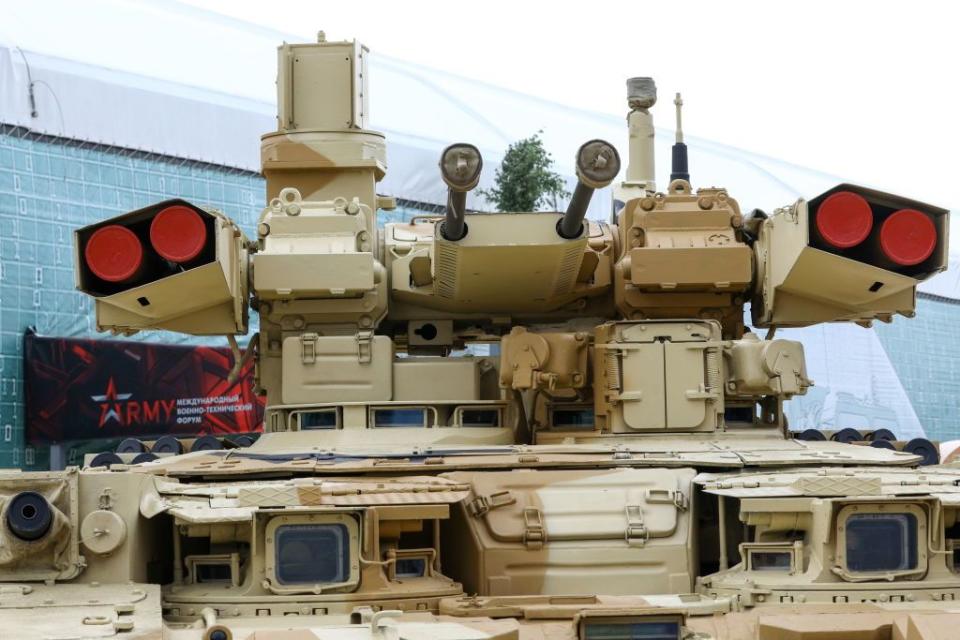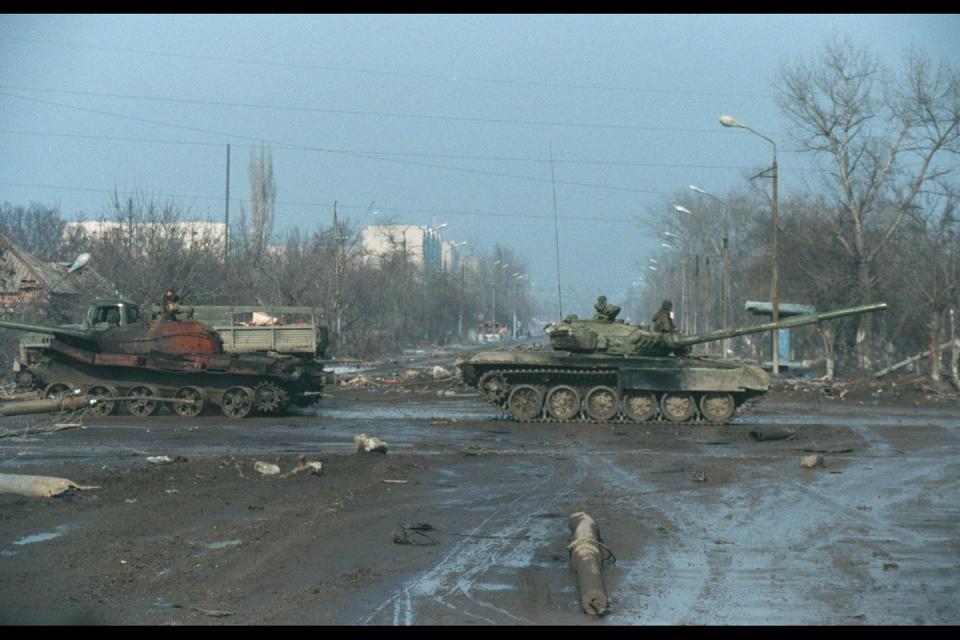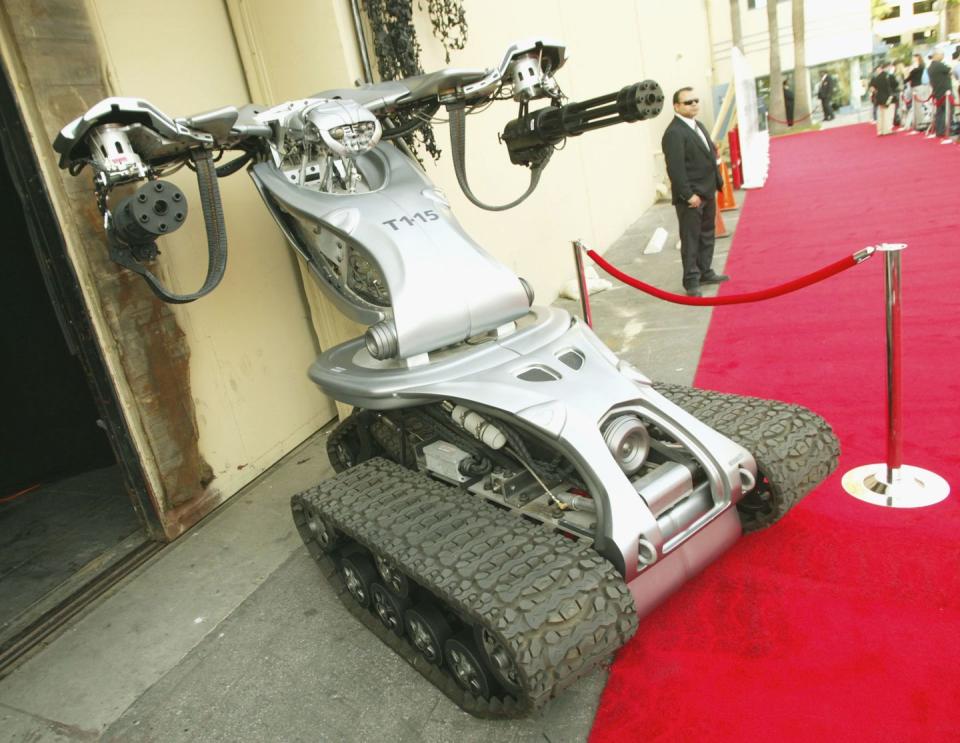Russia’s Terminator Weapon Is Unquestionably Terrifying, Possibly Unnecessary
The Russian Army received its first BMP-T tank support vehicles.
The BMP-T is designed to protect tanks by locating and destroying anti-tank missile launchers.
Russia originally rejected the vehicles, but is now finally receiving them for its own ground forces.
The Russian Army has received its first batch of BMP-T tank support vehicles, more than 30 years after they were first conceived. The BMP-T, also known as the “Terminator,” is designed to accompany tanks on the battlefield, zeroing in on and terminating enemy anti-tank teams.
➡ You love badass military machines. So do we. Let's nerd out over them together.
Russia’s Ground Forces have received eight of the armored vehicles for testing in military exercises, according to Defense News. The vehicles are operating with the 90th Tank Division in Chelyabinsk.

The BMP-T takes the chassis of a T-90 main battle tank and replaces the turret with ... a lot of weapons. The BMP-T is armed with two 2A42 30-millimeter autocannons, two AGD-17 automatic grenade launchers, four 9M120-1 Ataka anti-tank missiles, and in some cases, a remote-controlled 7.62-millimeter machine gun.
The crew of five (four weapon operators and a driver) are protected by the heavy tank chassis armor and Relikt reactive armor tiles designed to neutralize shaped charge warheads.
The BMP-T was designed in the late 1980s and dusted off again after Russia’s disastrous war in Chechnya from 1994 to '95. Russian tank and armored vehicle forces took heavy losses fighting against Chechen guerrillas. On New Year’s Eve 1994, an advance by Russian forces into the city of Grozny ended in a massacre. The 131st “Maikop” Brigade alone lost 800 men, 20 out of 26 tanks, and 102 out of 120 other armored vehicles in just two days of combat.

One big factor that led to the heavy losses was the design of Russia's tanks. Soviet and Russian tanks are well known for their low-slung, sleek appearance. This has the effect of making for a shorter, less visible tank on the battlefield, but also limits their ability to traverse main gun barrels up or down.
Advancing into a modern urban environment filled with multi-story buildings, Russian tanks couldn't elevate their guns high enough to engage the anti-tank teams shooting down on them from above. Russian tanks are fitted with 12.7-millimeter heavy machine guns capable of firing at high elevations. However, the guns are meant for engaging helicopters and aircraft, and manning them left the tank commander exposed to small arms fire.
The Coolest Military Toys
The BMP-T was designed to ride shotgun with Russian tanks into Grozny-like environments. The BMP-T’s mission is to search for, identify, and rain fire on enemy anti-tank teams. The vehicle’s autocannons, machine guns, and grenade launchers are capable of elevating to engage enemy troops in high buildings without exposing anyone to enemy fire.

There’s nothing quite like the BMP-T in western armies, particularly the U.S. Army. That’s because NATO armies don’t consider them necessary.
The U.S. Army’s own recent combat experience in the Iraq War saw tanks operate relatively well in urban areas, particularly in the 2004 Battle of Fallujah. The issue probably boils down to training: While the Maikop Brigade advanced into Grozny in a column formation and became trapped when the lead and rear vehicles were destroyed, U.S. Army and Marines advancing into Fallujah operated with dismounted infantry that rooted out enemy forces, only calling tanks up to deal with particularly stubborn defenses.
The Russian Ground Forces approved the BMP-T for use in 2010, but never actually bought them, declaring them unnecessary on the modern battlefield. Apparently, Moscow has now changed its mind. NATO forces do rely heavily on infantry equipped with anti-tank weapons, and a vehicle like the Terminator could eventually come in handy again.

As for the nickname “Terminator,” it’s not clear where it came from, but it could be a reference to the Terminator film franchise. The BMP-T’s weapons setup, with two “arms” equipped with an autocannon and anti-tank missiles, does bear a certain similarity to the robotic Hunter-Killer Tanks of the sci-fi series.
Now Watch This:
You Might Also Like
